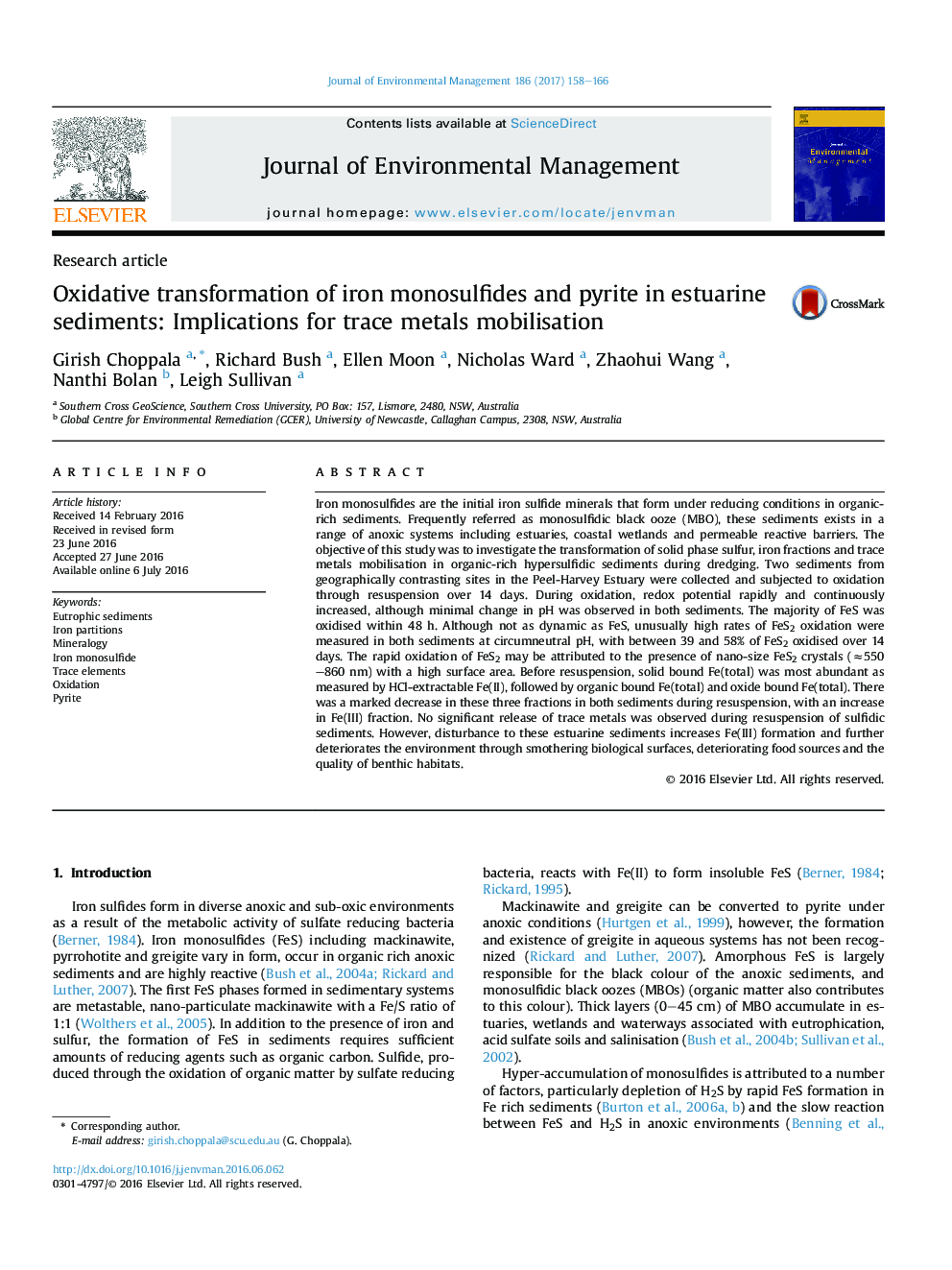| کد مقاله | کد نشریه | سال انتشار | مقاله انگلیسی | نسخه تمام متن |
|---|---|---|---|---|
| 5117414 | 1378125 | 2017 | 9 صفحه PDF | دانلود رایگان |
- Oxidative transformations of iron monosulfides and pyrite in sediments were investigated.
- The pH was unaffected but Eh increased throughout the resuspension of sediments.
- High rates of pyrite oxidation (39-58%) occurred in estuarine sediments.
- Nanocrystalline structure with high surface area contributed to high pyrite oxidation.
- Dissolved trace metal concentrations remained very low during resuspension.
Iron monosulfides are the initial iron sulfide minerals that form under reducing conditions in organic-rich sediments. Frequently referred as monosulfidic black ooze (MBO), these sediments exists in a range of anoxic systems including estuaries, coastal wetlands and permeable reactive barriers. The objective of this study was to investigate the transformation of solid phase sulfur, iron fractions and trace metals mobilisation in organic-rich hypersulfidic sediments during dredging. Two sediments from geographically contrasting sites in the Peel-Harvey Estuary were collected and subjected to oxidation through resuspension over 14 days. During oxidation, redox potential rapidly and continuously increased, although minimal change in pH was observed in both sediments. The majority of FeS was oxidised within 48Â h. Although not as dynamic as FeS, unusually high rates of FeS2 oxidation were measured in both sediments at circumneutral pH, with between 39 and 58% of FeS2 oxidised over 14 days. The rapid oxidation of FeS2 may be attributed to the presence of nano-size FeS2 crystals (â550-860Â nm) with a high surface area. Before resuspension, solid bound Fe(total) was most abundant as measured by HCl-extractable Fe(II), followed by organic bound Fe(total) and oxide bound Fe(total). There was a marked decrease in these three fractions in both sediments during resuspension, with an increase in Fe(III) fraction. No significant release of trace metals was observed during resuspension of sulfidic sediments. However, disturbance to these estuarine sediments increases Fe(III) formation and further deteriorates the environment through smothering biological surfaces, deteriorating food sources and the quality of benthic habitats.
Journal: Journal of Environmental Management - Volume 186, Part 2, 15 January 2017, Pages 158-166
